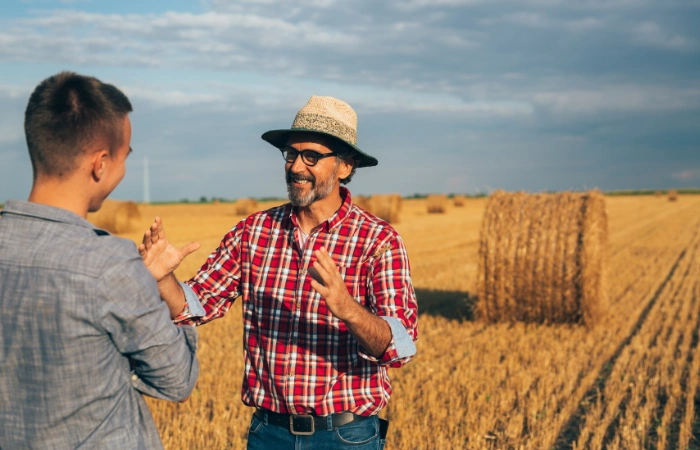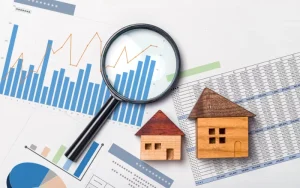Navigating the world of agricultural real estate, whether you’re considering buying, selling, or simply exploring investment opportunities, can seem like a daunting task. This blog aims to demystify the process, offering insights and practical advice on what makes agricultural land unique and how to approach transactions in this sector.
From understanding the critical aspects that influence the value and utility of farmland to navigating the complexities of legal and financial considerations, we’ll cover the essentials you need to know. Whether you’re a seasoned farmer, a new investor, or somewhere in between, this guide is designed to provide a comprehensive overview to help you make knowledgeable decisions in the agricultural real estate market.
What is Agricultural Real Estate?
Agricultural real estate refers to land and properties primarily used for farming and other agricultural activities, such as crop production, livestock breeding, and forestry. This type of real estate encompasses a wide range of properties, including farmland, ranches, orchards, and vineyards, as well as facilities for processing and storing agricultural products. Agricultural real estate is crucial for food production and can vary greatly in size and use, depending on the type of farming practiced and the geographical location. It represents a significant segment of the real estate market, offering investment opportunities and contributing to the rural economy.
Factors to Consider When Buying Agricultural Land
Buying agricultural land is a substantial investment that demands careful consideration of various factors to guarantee that the purchase meets your agricultural needs, investment goals, and legal requirements. Here are some key factors to consider when buying agricultural land:
- Soil Quality and Topography: Evaluating soil quality is essential for understanding the land’s fertility and suitability for specific crops. Soil tests should assess nutrient levels, pH, and the presence of contaminants. Topography influences water drainage, erosion rates, and machinery usage. Ideally, the land should match your agricultural needs, whether for row crops, orchards, or pasture. Investing in poor soil or unsuitable topography can lead to increased costs and reduced yields.
- Water Resources: Access to water is critical for irrigation, livestock, and other farm operations. Assess the reliability and availability of water sources, such as rivers, wells, or rainwater systems. Understand legal water rights and any usage restrictions, as water scarcity can severely limit farming activities. Consider the infrastructure for water storage and distribution on the land to ensure it meets your agricultural needs.
- Location and Climate: The land’s location influences the microclimate, pest pressures, and potential crops or livestock suited to the area. Climate factors like temperature, rainfall, and growing season length are critical for crop selection and farming success. Proximity to markets, suppliers, and agricultural services also impacts profitability and operational efficiency. A well-located farm can reduce transportation costs and improve access to resources.
- Legal and Zoning Restrictions: Before purchasing, investigate legal constraints, property rights, and zoning laws affecting agricultural use. Ensure the land has a clear title to avoid disputes and understand any easements or covenants. Zoning laws can impact farm activities, building permits, and future land use. Compliance with legal requirements prevents costly fines and ensures the land can be used as intended.
- Financial Considerations: Assess the land’s cost against your budget and financial goals. Consider long-term profitability, including operational costs, property taxes, and potential income from crops or livestock. Evaluate available financing options, interest rates, and repayment terms. Also, explore subsidies, grants, or tax incentives for agricultural operations. A sound financial plan ensures the land purchase is a sustainable investment.
Steps to Selling Your Agricultural Property
Selling your agricultural property can be a complex process, involving several steps to ensure that you receive the best possible price and that the sale goes smoothly. Here’s a general guide to help you through the process:
Step 1: Property Assessment and Preparation
Begin by thoroughly evaluating your agricultural property’s condition, including land quality, existing structures, and overall usability. Address any repair needs, improve curb appeal, and ensure the land is presentable for potential buyers. Document all assets and features of the property, as this information will be crucial for valuation and marketing. Consider hiring a professional appraiser to specify the market value accurately.
Step 2: Legal and Financial Review
Consult with legal and financial advisors to review any existing leases, agreements, or encumbrances that could affect the sale. Ensure all property taxes and debts are settled to avoid complications. Understand your legal obligations and potential tax implications of the sale. This step is vital to ensure a clear title and to streamline the sales process, making your property more attractive to potential buyers.
Step 3: Marketing and Listing the Property
Develop a targeted marketing strategy to reach prospective buyers likely interested in agricultural properties. Utilize various platforms such as online listings, agricultural publications, and real estate agents with experience in rural properties. Create a comprehensive sales packet that includes detailed information about the property, including photographs, soil reports, and maps to attract serious buyers.
Step 4: Negotiating and Accepting an Offer
Once you receive offers, evaluate them carefully, considering both the price and the buyer’s terms. Be prepared to negotiate to gain the best possible outcome. It’s important to understand the buyer’s perspective and to find a mutually agreeable deal. A proficient negotiator or real estate agent can be invaluable in this step to ensure you get a fair price and terms.
Step 5: Closing and Post-Sale Processes
After accepting an offer, work with your legal advisor and real estate agent to finalize the sale. This includes signing contracts, handling the transfer of funds, and ensuring all contractual obligations are fulfilled. After the sale, make sure to settle any remaining financial obligations and retain all relevant documents for your records. Post-sale, follow up on any necessary actions, such as transferring utilities or services.
Frequently Asked Questions

What are the tax implications of owning agricultural real estate?
Owning agricultural real estate comes with specific tax implications, including potential eligibility for agricultural tax exemptions and deductions. These can vary significantly by country and region but often include reduced property tax rates for land used for farming, deductions for operational expenses, and potential incentives for sustainable farming practices. To fully understand and benefit from these tax implications, it’s recommended to consult with a tax advisor who specializes in agricultural properties.
How does climate change impact agricultural real estate investment?
Climate change poses risks and opportunities for agricultural real estate investment. Increased frequency of extreme weather events, changing precipitation patterns, and shifting temperature zones can affect crop viability, water availability, and land usability. Investors need to consider resilience and adaptation strategies, such as investing in water-efficient irrigation systems, choosing crops suited to changing conditions, and exploring sustainable farming practices. Forward-thinking investments that address these challenges can also uncover new opportunities in agricultural innovation and sustainability.
Are there financing options specifically for purchasing agricultural land?
Yes, there are financing options especially designed for purchasing agricultural land, including loans from agricultural credit institutions, government-backed loan programs, and private financing tailored to the needs of farmers and agribusinesses. These financing options often offer competitive interest rates and flexible repayment terms and understand the unique challenges of agricultural operations. It’s beneficial to research and compare different financing options to find one that best suits your investment goals and financial situation.
Conclusion
Buying or selling agricultural real estate is a substantial decision that requires careful consideration and planning. By understanding the factors that affect agricultural properties, preparing entirely, and seeking professional advice, you can navigate the process successfully and achieve your real estate goals.
If you have any questions or need assistance with buying or selling agricultural real estate, feel free to contact us at 3D Real Estate. Our group of experienced professionals is here to help you every step of the way.




